Refund Guaranteed
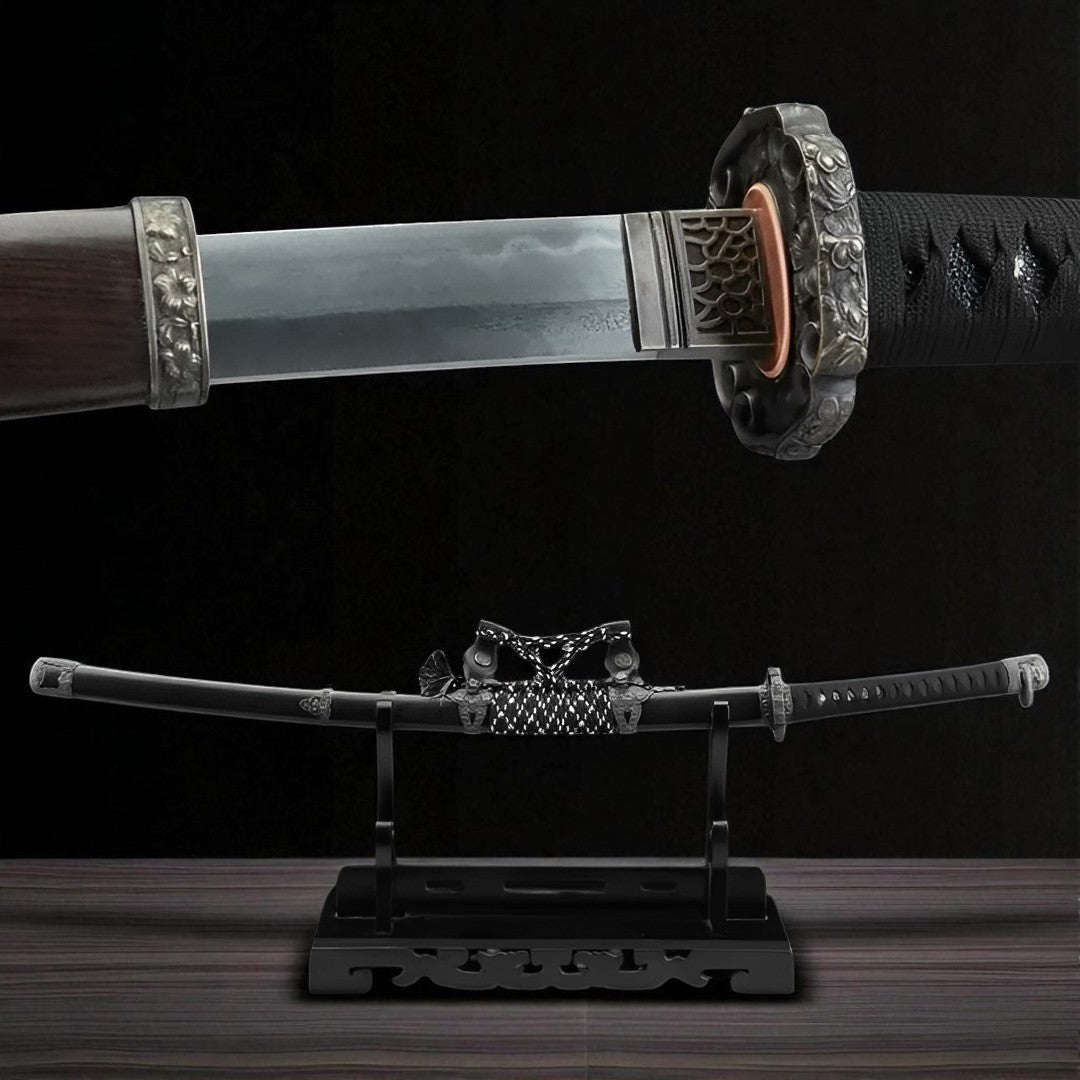
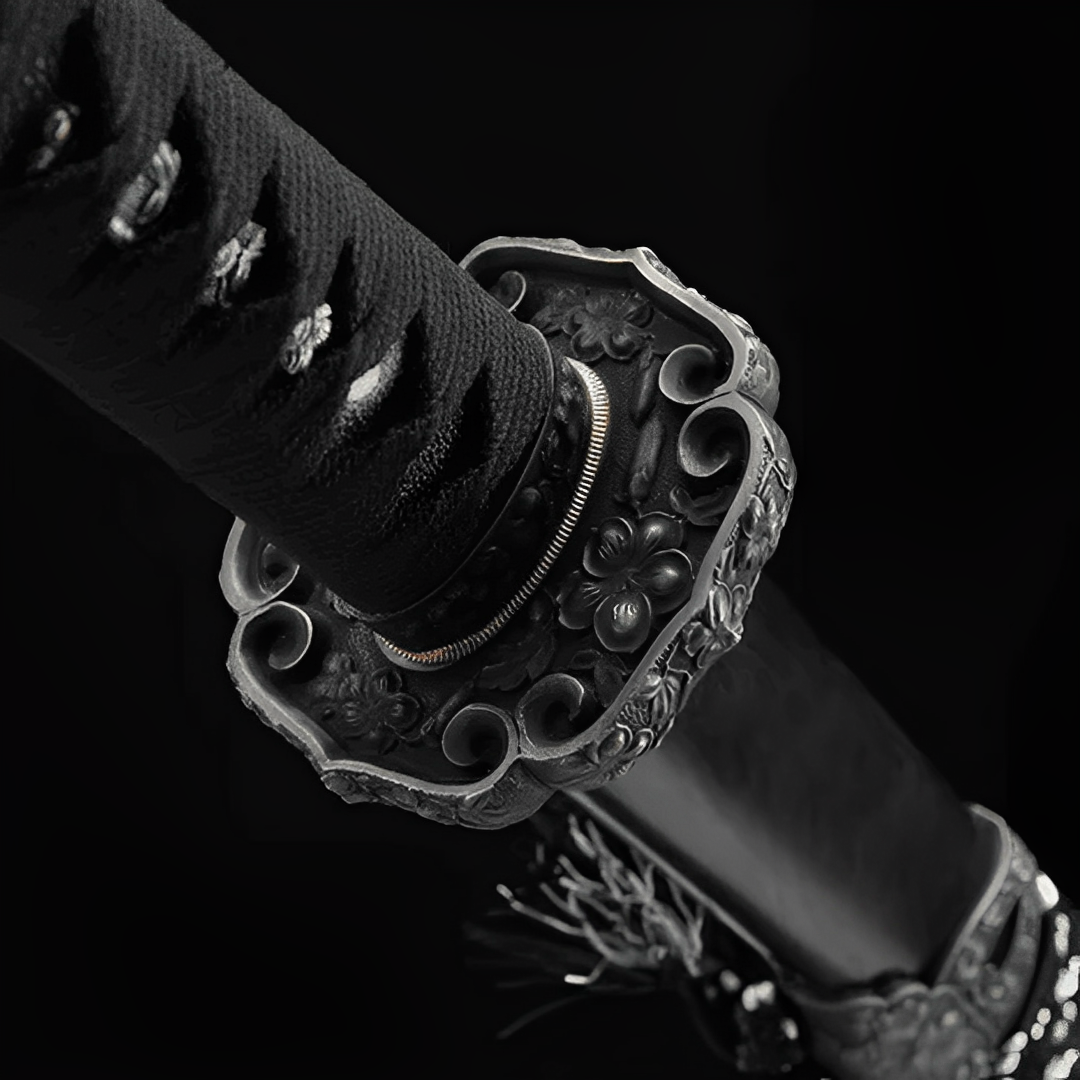
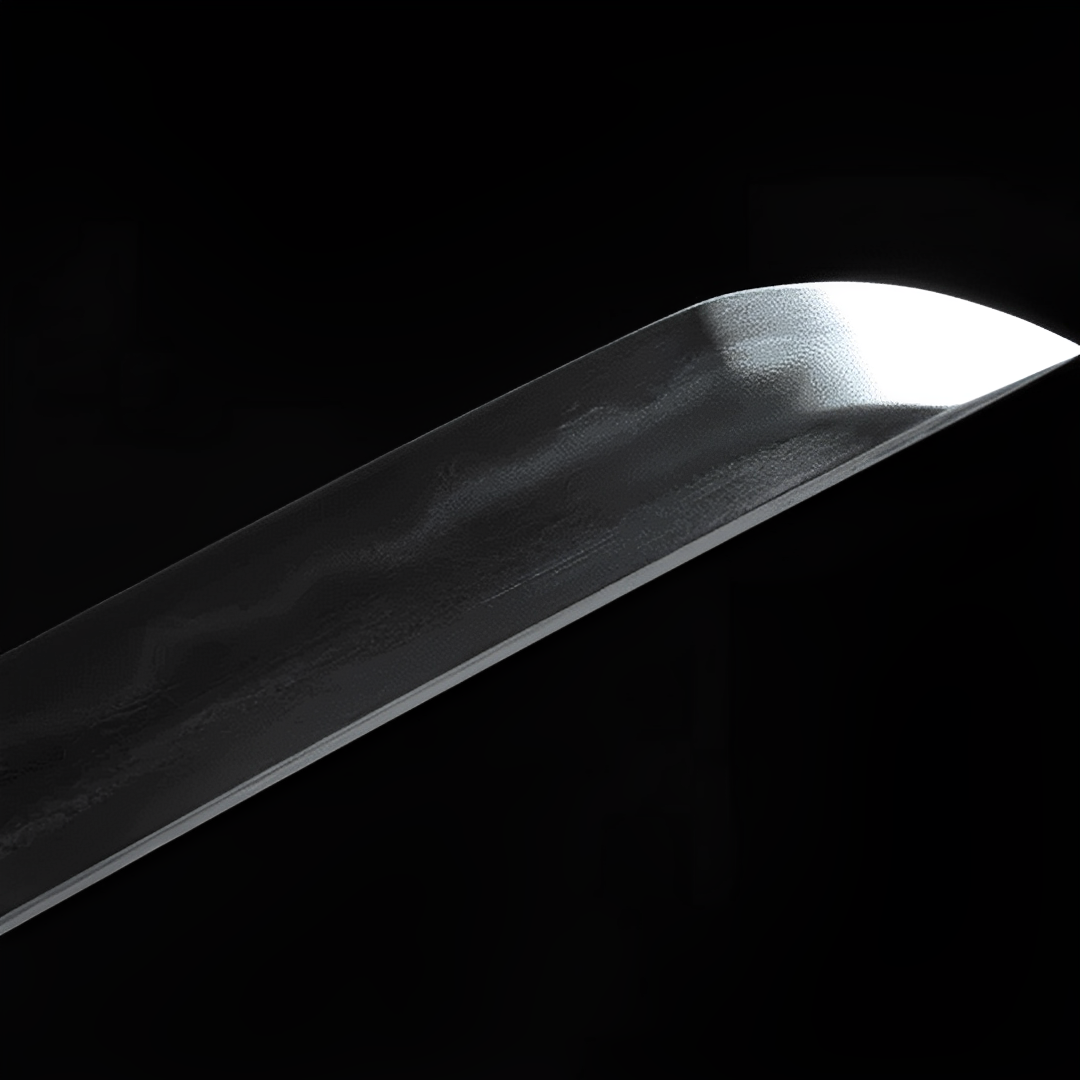
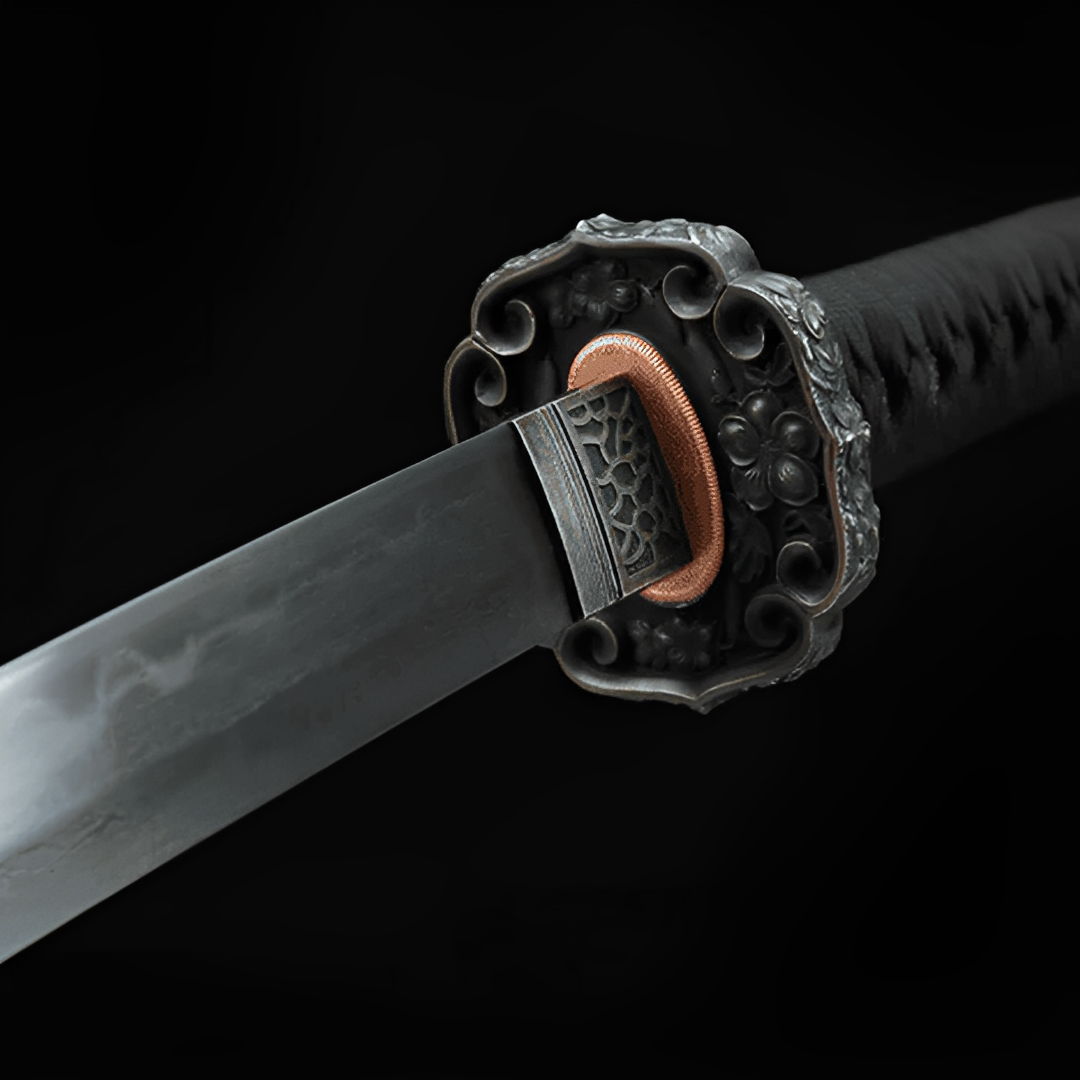
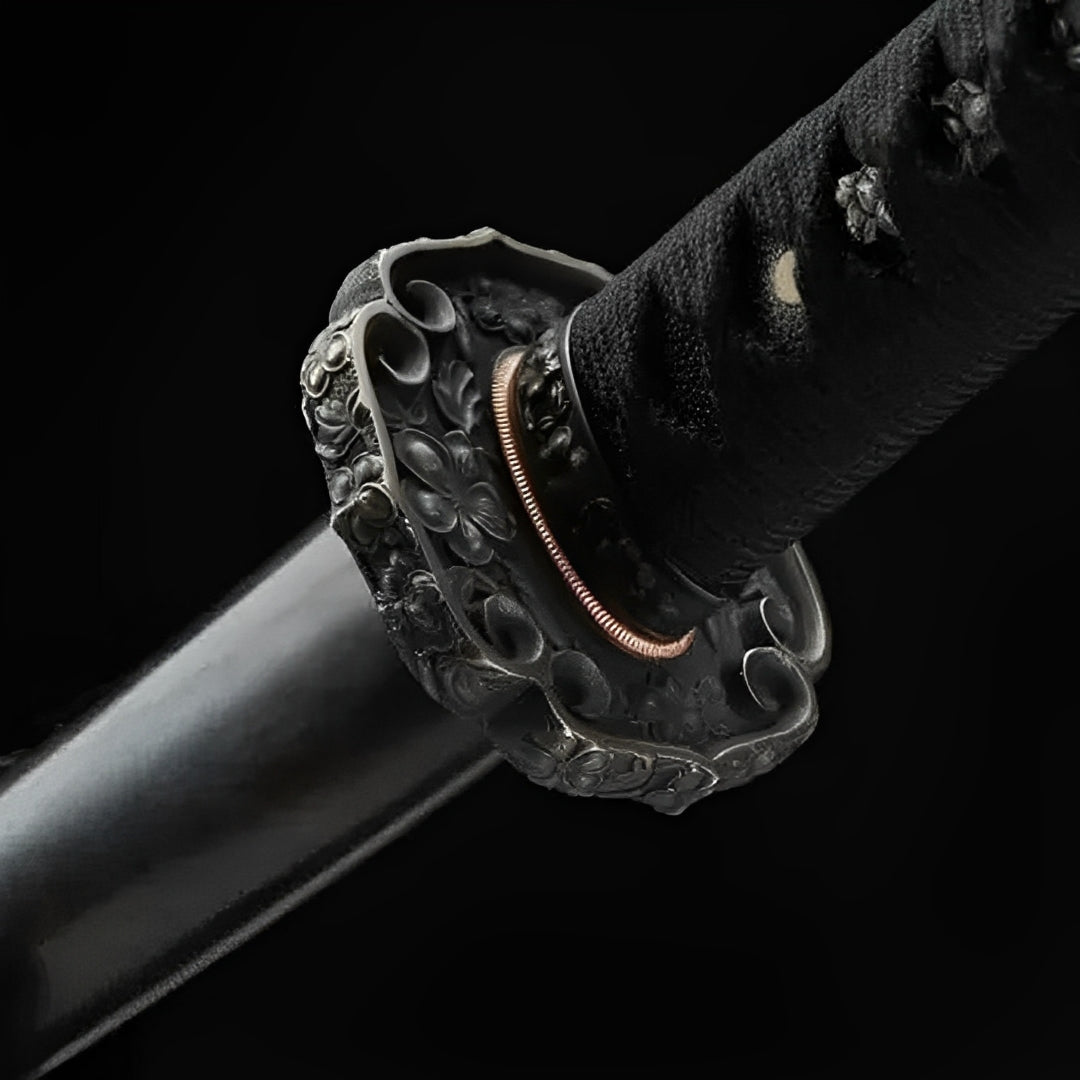
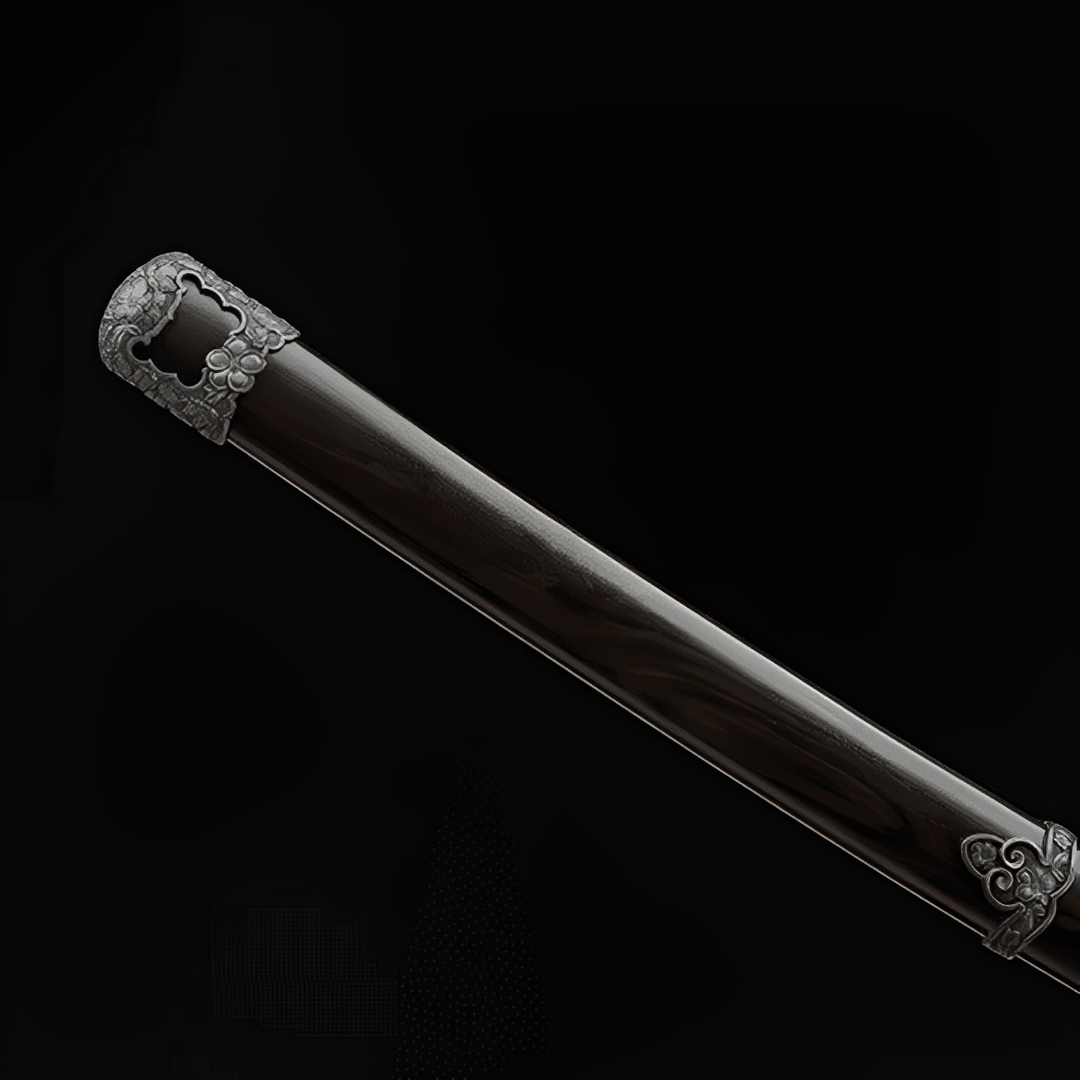
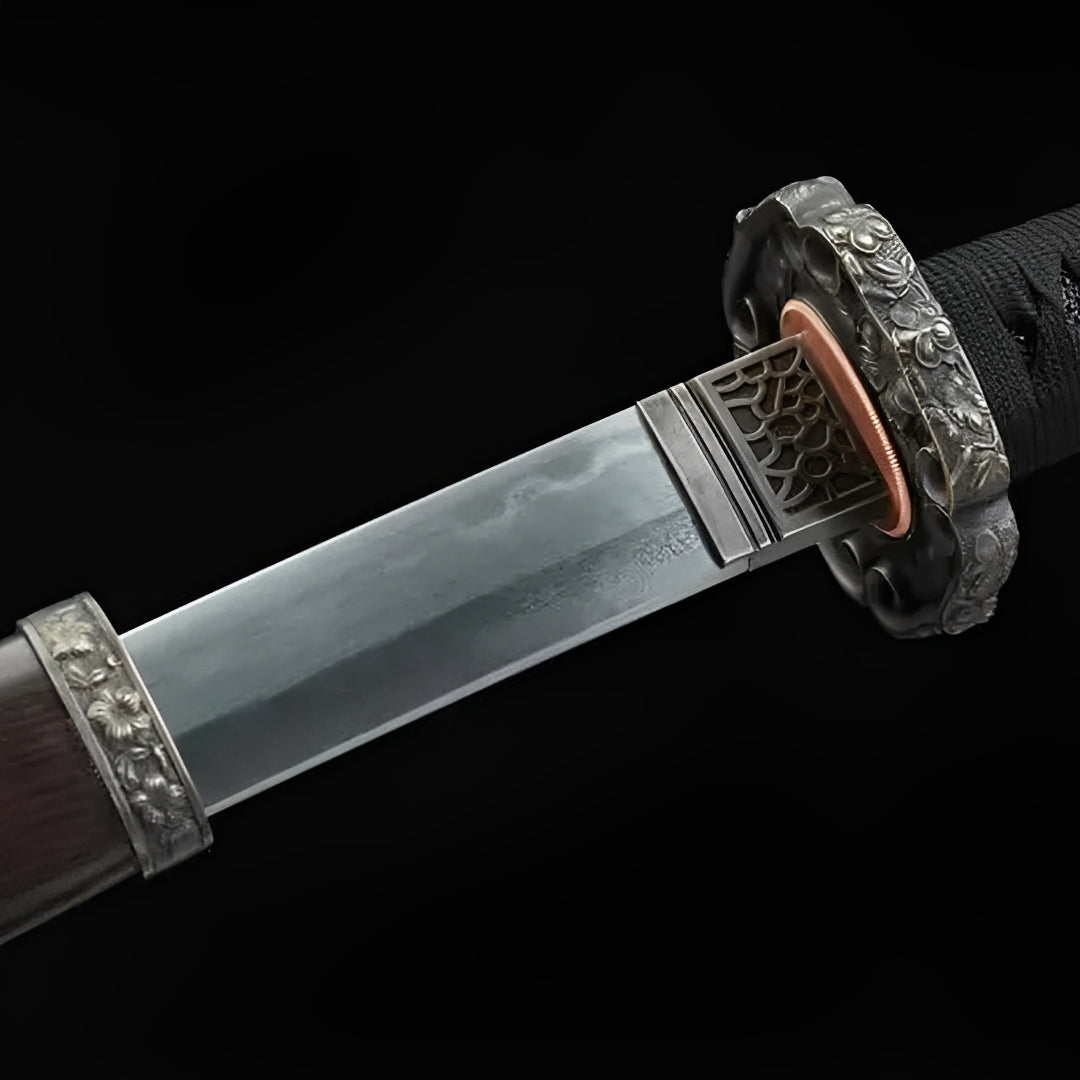
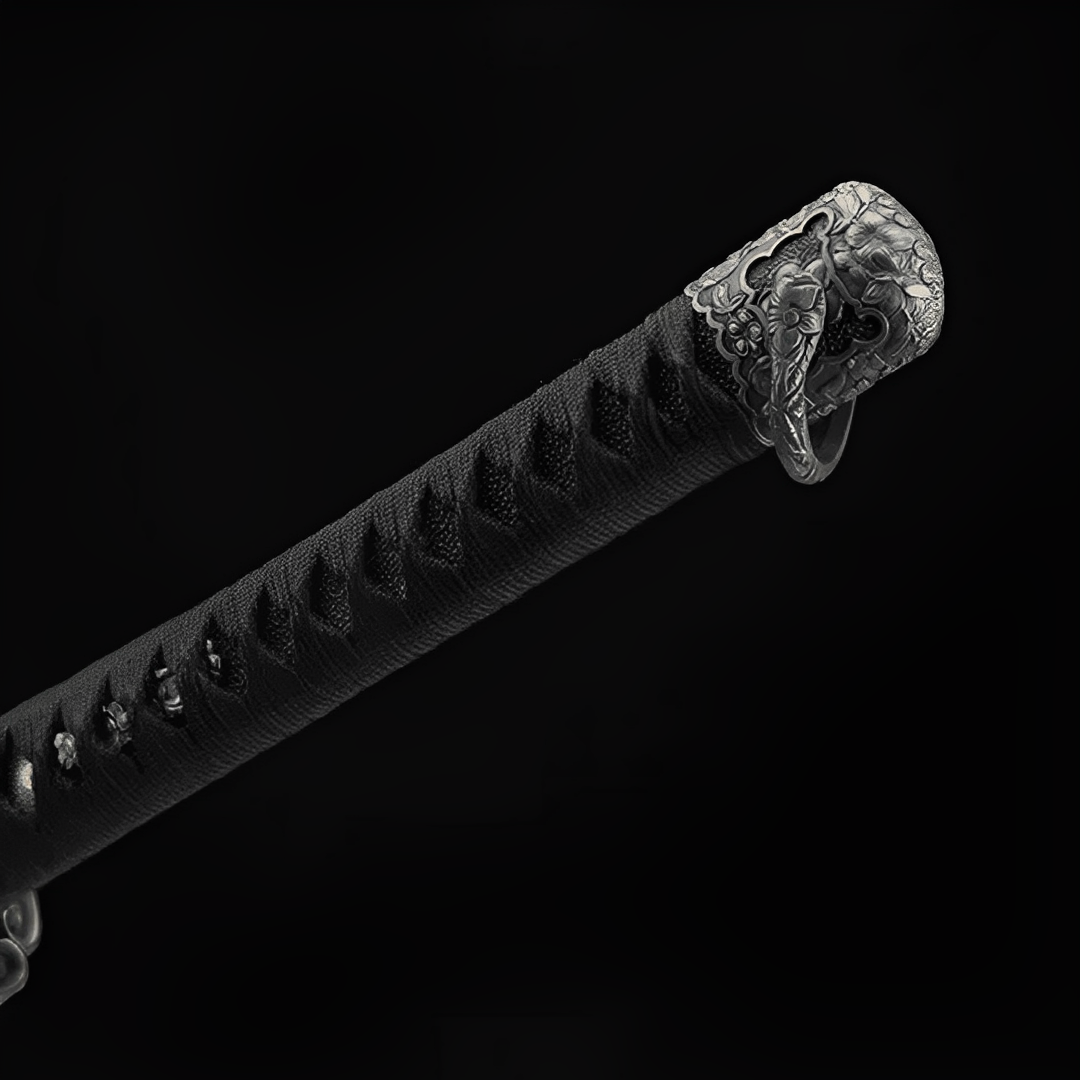
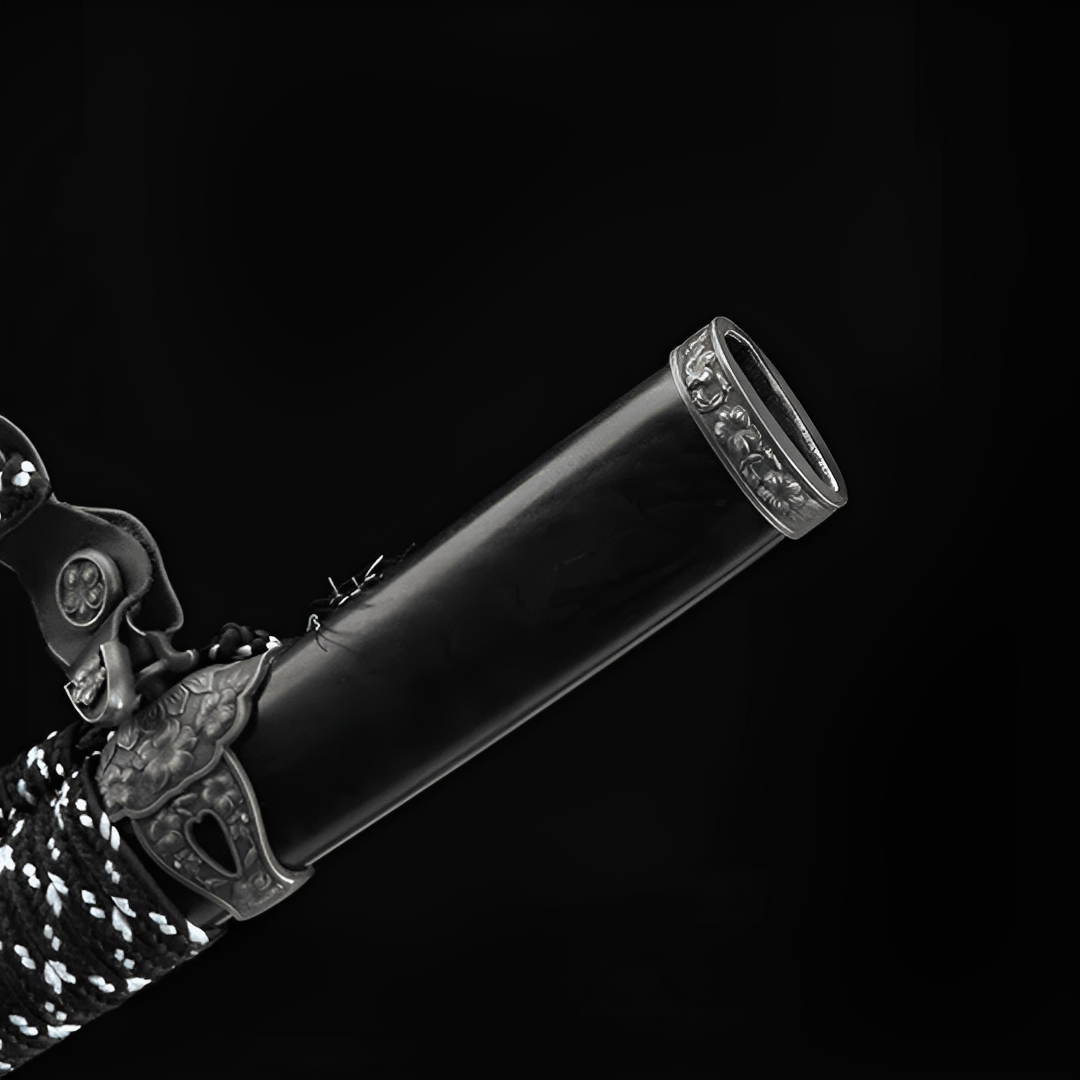
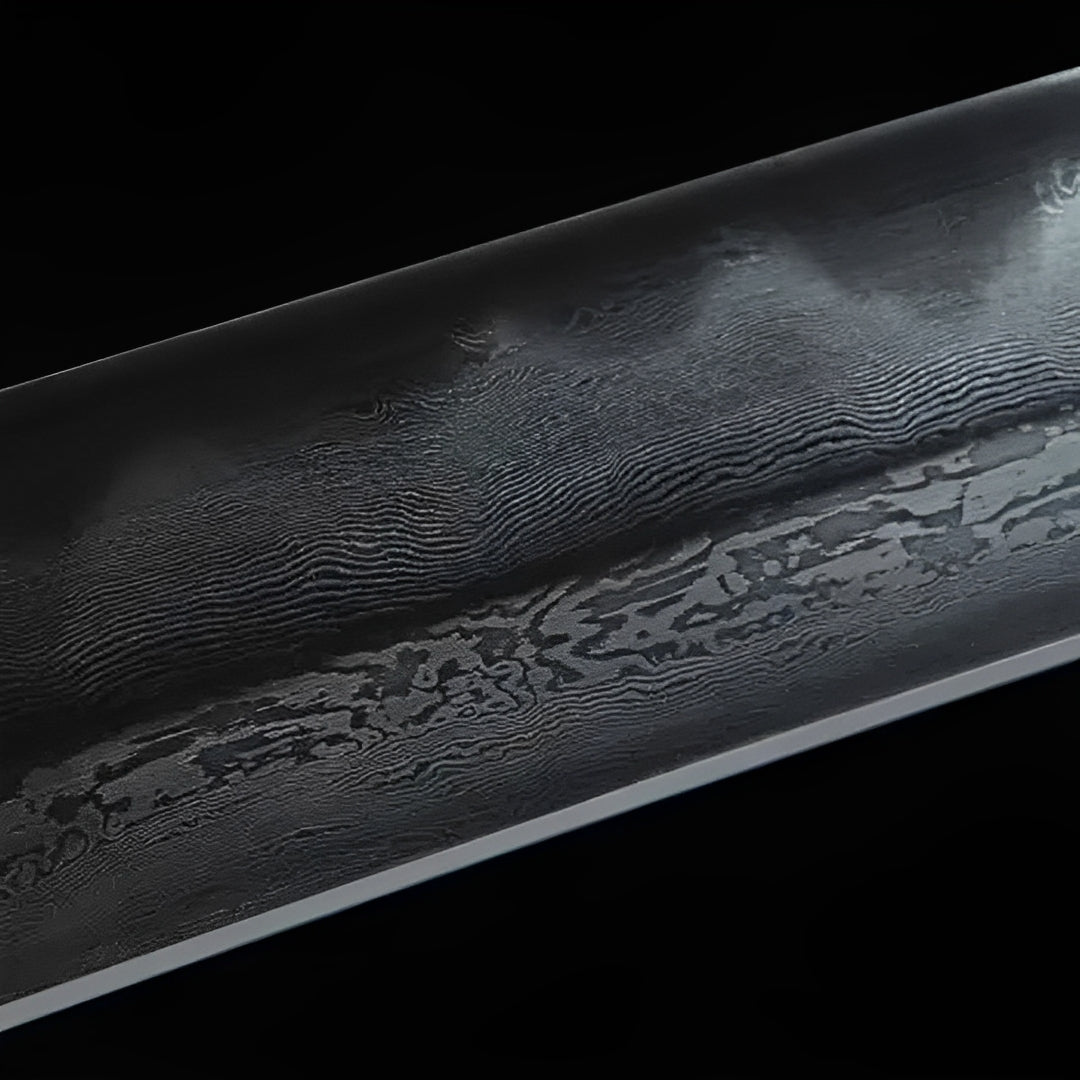
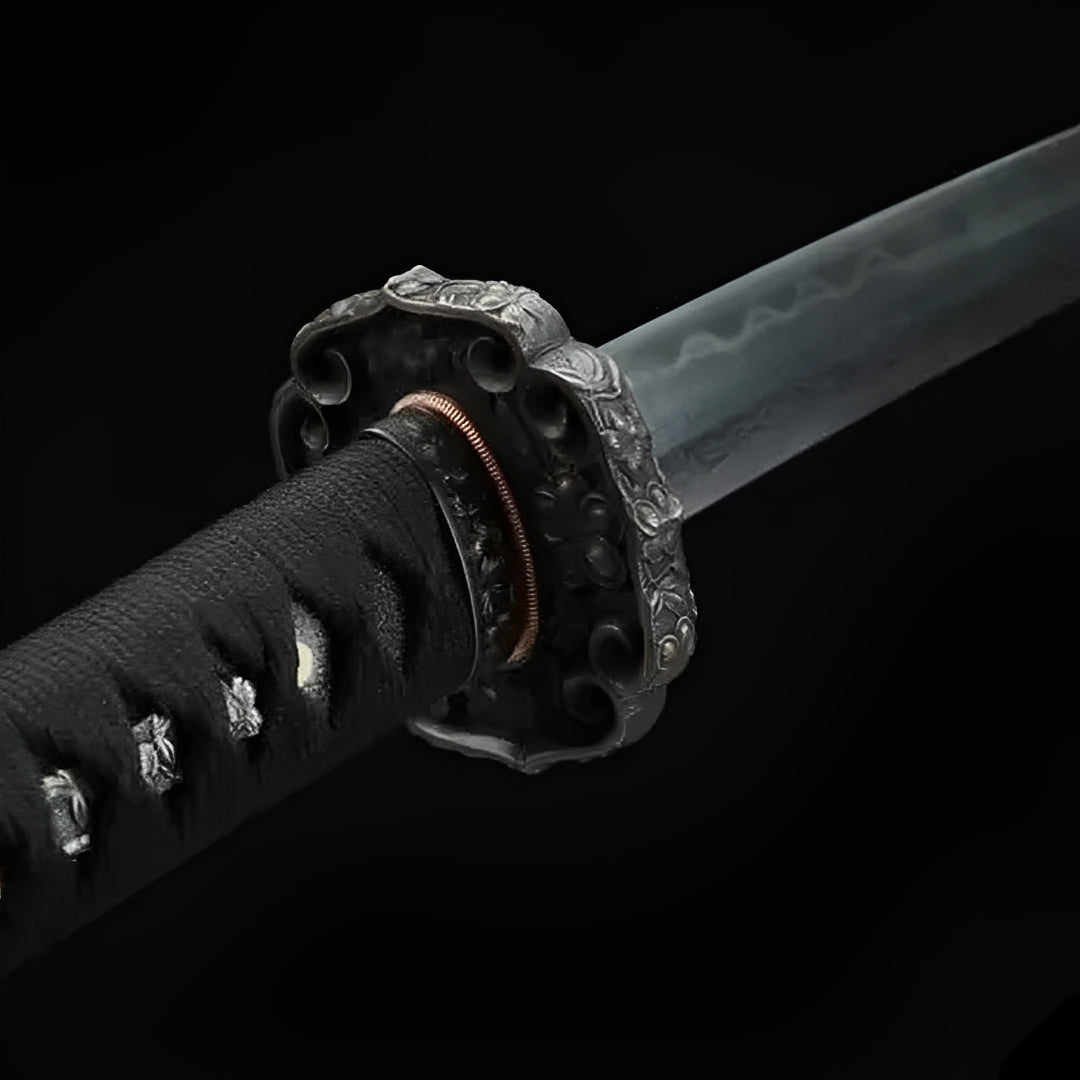
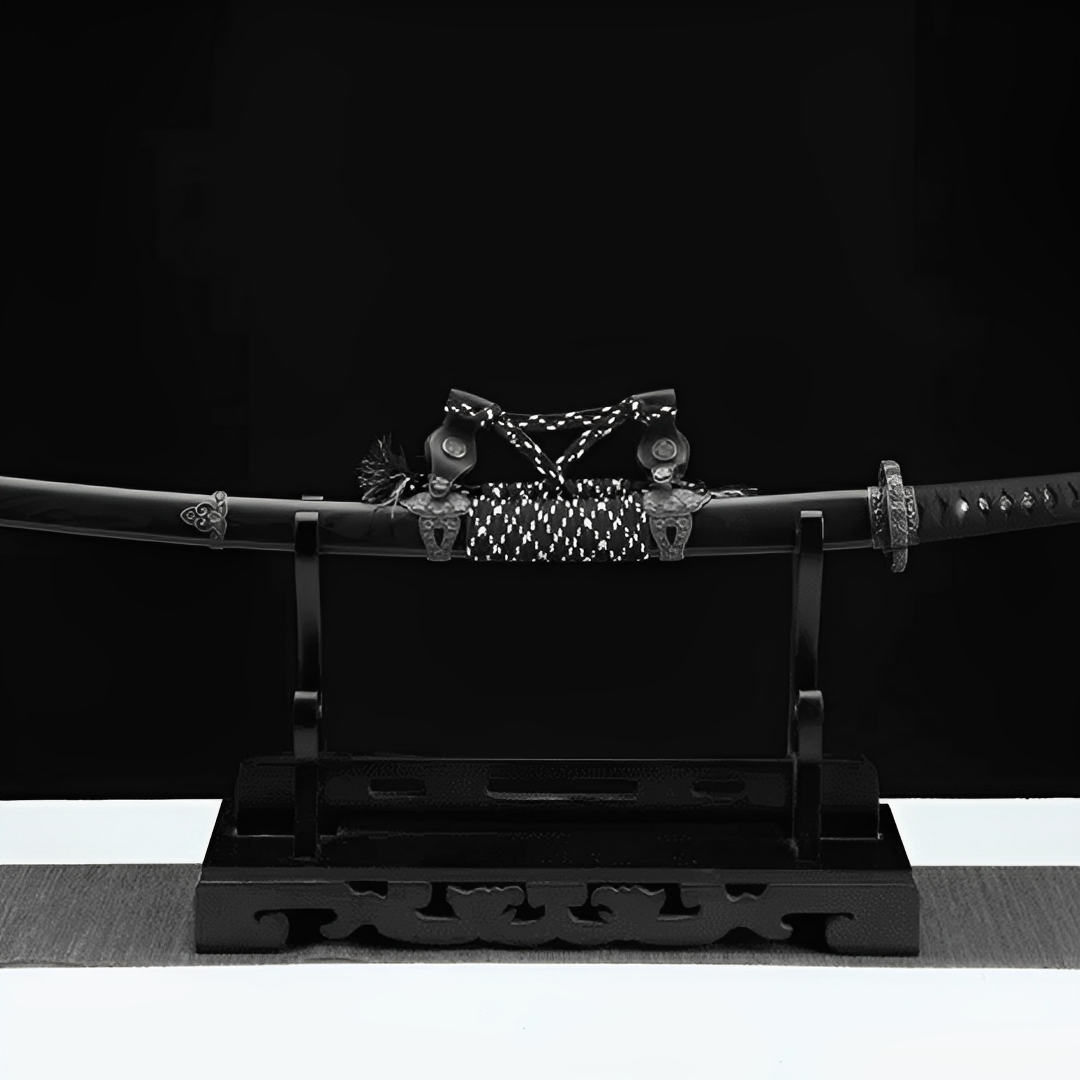
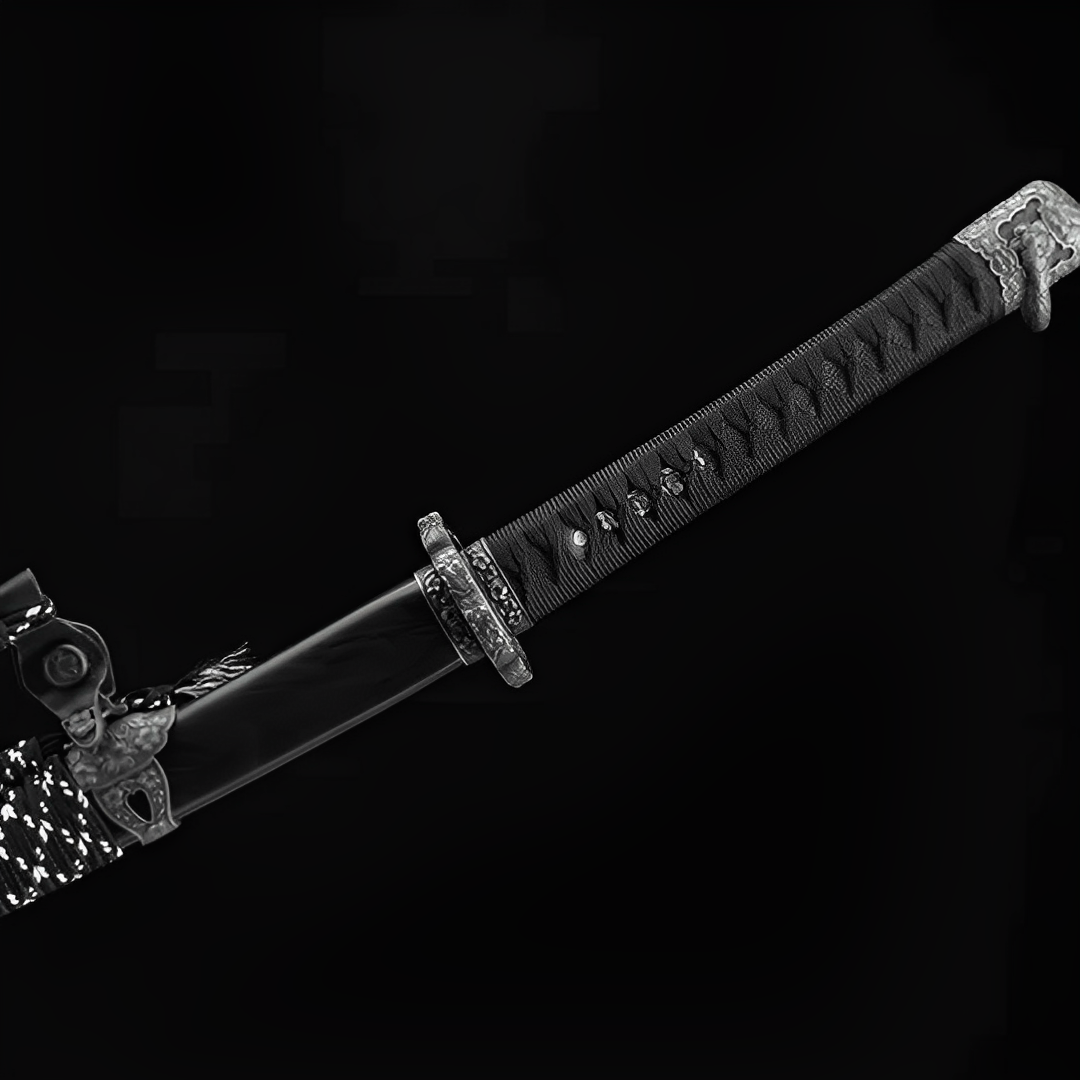
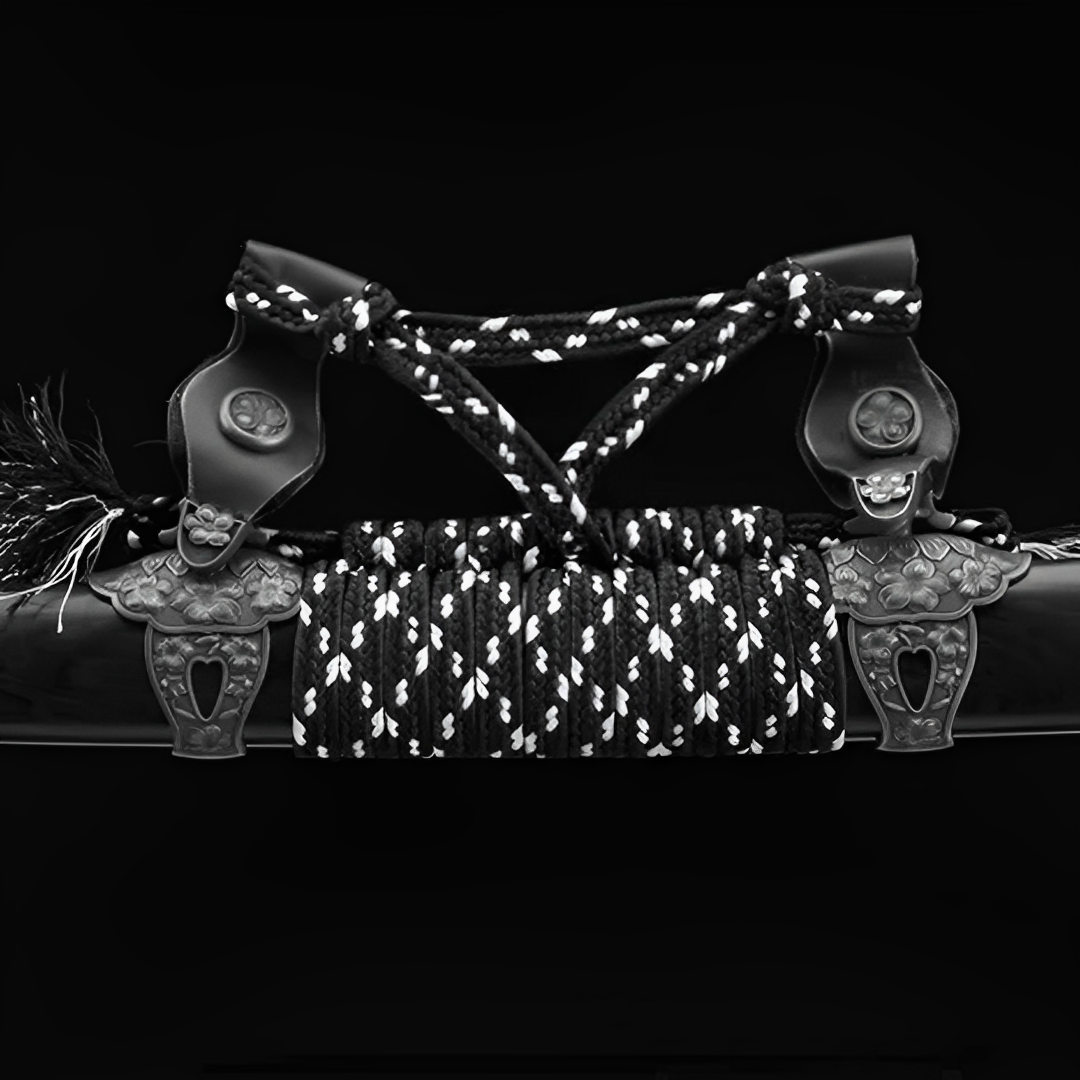
Why choose us
Damascus Steel
Forged Blade
Collector Quality
Trusted Globally
Inspired by Japan
Hanachi Katana (Damascus Steel & Genuine Hamon) - 花道
Included with your order



Note: Engraving placement and orientation may vary by blade model (hamon, geometry, and flat area).
Free Shipping over $250
No Bots, No AI
Refund Guaranteed
Free Shipping over $250
No Bots, No AI
Our team is here to help with any questions or concerns.
We’re always happy to assist you — don’t hesitate to reach out.
Why choose us
Damascus Steel
Forged Blade
Collector Quality
Trusted Globally
Inspired by Japan

Hanachi Katana (Damascus Steel & Genuine Hamon) - 花道
Specifications
- Full tang in the handle
- SHARP blade
- Hand-forged
- Blade material: Damascus steel with genuine hamon & hand-polished finish
- Habaki material: Brass
- Genuine ray skin on the handle
- Finely carved copper tsuba
- Lacquered wooden saya with leather fittings and sageo
- Tsuka-ITO made of cotton
- Total length: 105 cm
- Blade length: 72 cm
- Blade width: 3.2 cm
- Blade thickness: 0.7 cm
- Handle length: 30 cm
-
Included: Katana and its scabbard
Hanachi Katana - Earth Release Natural Cycle Harmony
Embrace impermanence through Hanachi Katana, blade teaching release through materials returning to earth. This cyclical natural harmony weapon refuses fighting entropy - copper oxidizing to verdant patina celebrating rather than resisting aging, dark wood grain revealing tree's growth rings marking decades of patient accumulation, damascus flowing like geological strata where earth's layers tell million-year stories, the entire piece embodying hanachi (放ち release/letting go) philosophy that greatest wisdom involves accepting rather than resisting natural cycles, asking whether you'll exhaust yourself fighting inevitable change or find peace through understanding that release isn't surrender but recognition that clinging to permanent things in impermanent world causes suffering only letting go can end.
Hanachi Release Philosophy
Hanachi (放ち) represents specific Japanese concept about releasing what cannot be held - letting arrows fly trusting trajectory, freeing captured birds accepting they'll depart, abandoning control recognizing some things transcend human management, the verb form suggesting active choice rather than passive loss, intentional release rather than unwilling abandonment. This deliberate release blade channels that distinction where letting go demonstrates wisdom rather than weakness, where choosing when to stop holding requires greater strength than clinging desperately, where understanding impermanence enables engaging fully precisely because you accept nothing lasts forever, the acceptance paradoxically enabling deeper experience than desperate attempts preserving what resists preservation could ever achieve.
Buddhist philosophy specifically teaches letting go as crucial for liberation - attachment causes suffering (the Second Noble Truth), clinging to impermanent phenomena creates dukkha when inevitable change occurs, releasing attachment to outcomes enables engaging process without anxiety about controlling results, the practice requiring distinguishing healthy engagement from unhealthy attachment. The liberation wisdom weapon embodies that teaching where sword exists without demanding permanence, serves without requiring eternal preservation, the materials themselves demonstrating that accepting change proves wiser than fighting it: copper will patina, wood will darken, steel will show use, resisting those changes exhausts while accepting them brings peace.
Traditional Japanese aesthetics specifically celebrated aging through wabi-sabi concepts - patina proving authenticity through age, wear marking genuine use versus pristine suggesting unused decoration, the weathering creating character impossible for new objects achieving, the philosophy recognizing that fighting decay wastes energy better spent appreciating beauty in each stage of object's natural lifecycle. The aging acceptance blade continues that tradition where sword's transformation over decades becomes feature not bug, the changes documenting relationship with owner rather than representing failure maintaining impossible perfection.
Contemporary minimalism movements specifically explore "letting go" through decluttering, reducing possessions, eliminating non-essential, the practice recognizing that holding too much prevents fully experiencing what remains, that release creates space impossible when everything stays forever. The sword becomes meditation object prompting questions: what needs releasing? What attachments cause suffering? What would freedom from desperate clinging enable experiencing more deeply?
Philosophical collectors specifically appreciate pieces embodying complex concepts requiring contemplation, recognizing that objects teaching through their existence serve purposes beyond decoration, that sword prompting reflection about impermanence and release provides greater value than merely pretty blade offering no deeper engagement opportunities, the hanachi blade becoming teacher about universal human challenge of when to hold versus when to release.
Earth Element Connection
Earth (地 chi) represents specific element in Japanese five-element system (earth, water, fire, wind, void) - stability, grounding, nourishment, the foundation supporting all else yet taken for granted until removed, the element embodying qualities of patience, accumulation, gradual change over long timescales. This grounded element blade specifically channels earth's character through material choices - actual wood from trees grown over decades, copper from earth's mineral deposits, steel forged from iron ore extracted from geological formations, every component originating from earth and eventually returning there, the cycle completing what trees, minerals, and ores began millions of years before human craft transformed them temporarily into sword form.
Traditional Eastern medicine and philosophy specifically associated earth element with late summer (harvest season), with transformation and change, with center or balance point around which other elements circulate, with organs of digestion transforming food into energy (parallel to earth transforming organic matter into nutrients), with yellow-brown colors matching soil tones, with sweet flavors, with specific emotions and psychological states. The elemental balance weapon therefore carries associations beyond mere material composition, the earth element choice communicating specific philosophical stance about stability, nourishment, transformation, the grounding force enabling all other activities.
Geological timescales specifically create perspective shift - the steel's iron formed in ancient star explosions, the copper deposited by hydrothermal processes millions of years ago, the wood grown from tree absorbing nutrients from soil enriched by countless generations of decomposed organic matter, every material representing processes spanning eons compared to human lifespans measuring mere decades. The deep time blade reminds that individual human concerns exist against backdrop of cosmic processes continuing regardless of whether anyone notices, that perspective enabling both humility (you matter less than you think) and freedom (therefore stress about small things proves pointless).
Contemporary environmental consciousness specifically reconnects people to earth's material cycles - recognizing that "throwing away" merely moves things elsewhere since earth is closed system, understanding that "waste" is human concept not recognized by nature where everything becomes input for something else, acknowledging that industrial society's linear "extract-use-discard" model conflicts with earth's circular processes recycling everything eternally. The cyclical awareness weapon embodies that recognition through materials that came from earth and will return there, the temporary sword form existing within eternal material cycles transcending human timeframes.
Copper Patina Celebration
The copper tsuba and accents create this blade's most distinctive warm metallic presence - not cold silver suggesting precision, not bright gold suggesting luxury, not utilitarian brass suggesting function, but copper specifically communicating warmth, earth connection (copper ore comes from earth), and beautiful aging (copper's green patina becomes more attractive through oxidation most metals fight). This warm aging metal blade celebrates what other metals resist - copper WANTS to patina, the oxidation creating protective layer preventing deeper corrosion while producing verdant colors suggesting life, growth, earth's fertility, the green patina becoming badge of authenticity proving genuine copper rather than substitute materials maintaining artificial permanence through resisting nature's transformative processes.
Traditional Japanese metalworking specifically valued copper alloys for specific applications - bronze temple bells whose sounds carried spiritual significance, copper architectural elements whose patina signaled age and authenticity, shakudō alloy (copper-gold) achieving deep blue-black through controlled patination used in sword furniture, the culture embracing rather than resisting copper's tendency developing colors through age. The traditional patina weapon continues that acceptance where copper's aging proves feature not defect, where transformation demonstrates authenticity rather than representing failure maintaining impossible standards.
The scale pattern on copper tsuba specifically creates organic texture suggesting reptile skin, fish scales, or pangolin armor - natural defensive structures combining flexibility with protection, the biological armor inspiring human defensive equipment throughout history, the pattern choice reinforcing earth/nature theme where organic forms provide design inspiration rather than geometric abstractions dominating through ignoring nature's proven solutions. The biomimetic guard demonstrates that sometimes best human designs involve studying then adapting nature's time-tested approaches rather than assuming human innovation invariably surpasses millions of years of evolutionary refinement.
Contemporary architecture and design specifically rediscovered copper's beauty - buildings featuring copper roofing celebrated as patina develops over decades creating unique appearance impossible for identically-constructed structures achieving (each building's microclimate and exposure patterns creating distinct patination), the architects intentionally choosing material that transforms rather than maintains static appearance, the design philosophy embracing change as feature rather than fighting it as defect. The architectural wisdom blade applies those lessons to sword design where materials' natural behaviors become celebrated rather than resisted.
Dark Wood Natural Grain
The deep walnut or rosewood saya creates sophisticated natural aesthetic - not blonde woods suggesting youth, not painted finishes hiding materials beneath, not synthetic alternatives pretending to be what they're not, but dark hardwood revealing grain patterns documenting tree's growth history, the wood chosen specifically for beauty emerging through natural characteristics rather than imposed decoration. This honest material scabbard refuses concealment, the visible grain announcing "I am wood, I grew as tree, I carry that history visible in my structure," the transparency demonstrating respect for materials rather than treating them as substrates awaiting decoration concealing their nature.
Traditional Japanese carpentry (木工 mokkou) specifically celebrated wood selection as crucial craft skill - master carpenters spent careers learning which woods served which purposes, how grain direction affected structural properties, which cuts revealed most beautiful patterns, the knowledge enabling creating structures and objects where wood's natural characteristics provided beauty through honest expression rather than requiring paint or veneer hiding materials beneath artificial surfaces. The carpenter wisdom blade honors that tradition where saya's beauty emerges from thoughtful wood selection and finishing rather than decoration concealing mediocre material choices.
The dark tones specifically suggest age, maturity, gravitas - not bright cheerful colors suggesting playfulness but serious sophisticated browns suggesting adult perspectives, accumulated experience, the weight of knowledge gained through decades rather than enthusiasm of youth knowing little yet confident about everything. The mature perspective scabbard communicates that this blade serves collectors who've progressed beyond initial excitement into deeper appreciation, who value substance over flash, who recognize that sometimes greatest beauty whispers through restraint rather than shouting through excess.
Growth rings visible in wood grain specifically document tree's history - each ring representing one year's growth, wide rings indicating favorable conditions, narrow rings showing years of stress or limited resources, the accumulated pattern telling story about climate, competition, challenges overcome, the biography written in cellulose rather than words. The biographical material therefore makes each saya unique even when using identical construction methods, no two trees producing identical grain patterns, the natural variation ensuring genuine individuality impossible for mass-produced alternatives achieving.
Damascus Earth Strata
The damascus steel patterns specifically suggesting geological layering creates visual metaphor for earth's stratification - sedimentary rocks depositing layer by layer across millennia, metamorphic transformation altering existing layers through heat and pressure, the resulting patterns telling story about processes spanning timescales humans can barely comprehend. This geological steel blade channels that aesthetic where metal's layered construction mimics earth's layered structure, the parallel teaching that human craft often succeeds through emulating nature's proven approaches rather than assuming innovation requires rejecting everything preceding it.
Unlike other damascus blades focusing on water (#38 Elden Ring rivers), clouds (#37 Kumo), artistic swirls (#28 Blue Blade), or devotional repetition (#43 Atsu), this damascus specifically represents EARTH STRATA - the layers documenting accumulation over time, the flow patterns suggesting tectonic forces, the overall aesthetic communicating geology rather than meteorology or fluid dynamics or metallurgical process. That thematic specificity prevents this becoming "another damascus sword" - the pattern serves precise conceptual function communicating earth element connection rather than merely looking pretty through generic "damascus is cool" reasoning.
Traditional Japanese aesthetic concepts of kasane (重ね layering) specifically celebrated accumulated layers creating depth - kimono worn in layered combinations revealing colors at edges, lacquerware built through dozens of coats creating dimensional depth, poetry using layered meanings where surface reading and deeper interpretations coexist, the cultural appreciation for complexity achieved through accumulation rather than single overwhelming gesture. The accumulated depth blade participates in that tradition where damascus layers create richness impossible through single steel's uniform appearance.
The visible hamon cutting across damascus layers creates fascinating visual interaction - the temper line representing one process (differential hardening during quenching) intersecting patterns from different process (pattern welding during forging), the two techniques' results combining into single composition where distinguishing which came first becomes impossible, the integration demonstrating that separate processes properly executed can synthesize into unified result transcending either technique alone.
Natural Cycle Collection
This earth wisdom piece serves collectors who've developed philosophical relationships with their swords, who appreciate objects teaching through their existence, who recognize that finest pieces prompt contemplation about principles extending beyond collecting into living, who understand that sword embodying hanachi philosophy about letting go provides daily reminder about universal challenge of accepting impermanence without becoming paralyzed by mortality's certainty.
Environmental collecting specifically attracts those valuing sustainable materials, natural aging beauty, objects connecting to earth's cycles rather than attempting existing apart from them, the recognition that everything ultimately returns to earth making sense embracing rather than fighting that trajectory. The copper, wood, and steel all came from earth and will return there eventually, the sword's temporary existence as functional art object representing one phase in materials' eternal cycling through various forms.
Museum exhibition contexts specifically welcome pieces demonstrating material science principles - the damascus layering, genuine hamon heat treatment, copper's oxidation chemistry, wood's cellular structure, all providing educational opportunities teaching about how traditional craftsmen understood materials' properties centuries before modern chemistry explained underlying mechanisms. The pedagogical earth blade serves dual functions: display piece and teaching tool.
Investment considerations particularly favor natural materials aging gracefully - unlike synthetic alternatives degrading into ugliness, properly maintained copper, wood, and steel become more distinguished through decades, the aging adding rather than subtracting value, the patina and wear patterns creating character impossible for new pieces achieving regardless of cost. That graceful aging ensures the piece maintains and potentially increases value as it transforms through time rather than depreciating from "perfect new" state through inevitable decline.
The philosophical maturity sword particularly appeals to collectors who've progressed through accumulation into curation, who've learned that sometimes fewer pieces properly appreciated beats many pieces casually acknowledged, who've discovered that release creates space enabling deeper engagement with what remains, who understand hanachi philosophy applies to collecting itself: knowing when acquiring serves growth versus when restraint proves wiser, recognizing that letting collections breathe through selective reduction sometimes enhances rather than diminishes them.
Care Instructions: Maintain this earth harmony blade understanding materials chosen specifically for their natural behaviors. The copper WILL patina - decide whether embracing green oxidation honoring aging or polishing maintaining bright appearance, both approaches valid but reflecting different philosophies about change acceptance. The dark wood benefits from occasional oil application preventing excessive drying while maintaining natural appearance - avoid varnishes or polyurethanes that would create artificial barrier contradicting natural material philosophy. The damascus requires regular oiling preventing rust while maintaining pattern visibility. Handle knowing this embodies specific philosophy about impermanence and release, that materials transforming through time demonstrates rather than contradicts core concepts about accepting change. Display where it prompts daily reflection about what needs releasing - the attachments causing suffering, the desperate clinging preventing peace, the control requiring constant energy maintaining yet ultimately doomed to fail against entropy's patient grinding. Consider this blade teaching that everything returns to earth eventually, that accepting that truth enables living more fully now, that fearing impermanence wastes present moments that could be experienced deeply if anxiety about their ending didn't prevent full engagement. The earth element reminds: you came from earth and will return there, everything you hold ultimately gets released whether willingly or not, choosing release consciously demonstrates wisdom while desperate clinging demonstrates fear, the materials themselves modeling grace through transformation you can either resist futilely or embrace peacefully. Hanachi teaches: let go, not because holding proves impossible but because release chosen freely brings peace that desperate clutching never achieves, the arrow flies true only when archer releases, the bird's beauty appreciated fully only when cage opens, the materials transform gracefully only when you accept rather than fight their natural processes.
Release. Transform. Return. Earth teaches: everything cycles, clinging causes suffering, letting go enables peace. Hanachi flows.
Legal Disclaimer
By purchasing from Katana Corp, you acknowledge and agree that:
- You are at least 18 years of age (or the age of majority in your jurisdiction).
- You are solely responsible for verifying and complying with all local laws and import regulations before placing an order.
- Some countries prohibit the importation of swords entirely. Katana Corp is not responsible for orders delayed, seized, or refused by customs authorities.
- All katanas and related products are sold strictly as decorative and display items. They are not intended or certified for combat use.
- Depending on the jurisdiction, swords may legally be considered bladed weapons, subject to specific restrictions or prohibitions.
- Katana Corp disclaims all liability for any injury, damage, or legal consequences resulting from misuse, abuse, or unlawful use of its products.
For full details, please refer to our Terms of Service.
Care & Maintenance
To maintain your katana's appearance and performance over time, we recommend:
- Regularly wiping the blade with a soft cloth to remove fingerprints and moisture.
- Applying a light coat of choji oil to prevent rust (for carbon steel blades).
- Storing the sword in a dry place, preferably inside its saya.
- Avoiding direct contact with hard surfaces to preserve sharpness and finish.
For more care tips, check our full maintenance guide in the FAQ section.
Behind the Blade
Every katana we offer carries the essence of centuries-old craftsmanship.
More than just a weapon, the katana symbolizes discipline, honor, and mastery.
Our artisans draw inspiration from traditional forging methods to ensure each blade reflects the spirit of the samurai — strength, precision, and soul.
Owning one is not just about aesthetics — it’s about carrying a piece of that legacy.
User Experience
This katana is designed to offer a perfect balance between blade and handle.
Its ergonomic tsuka (handle) allows a secure two-handed grip, while the weight distribution ensures smooth, fluid movement.
Whether for training, display or cutting practice, handling feels natural and precise.
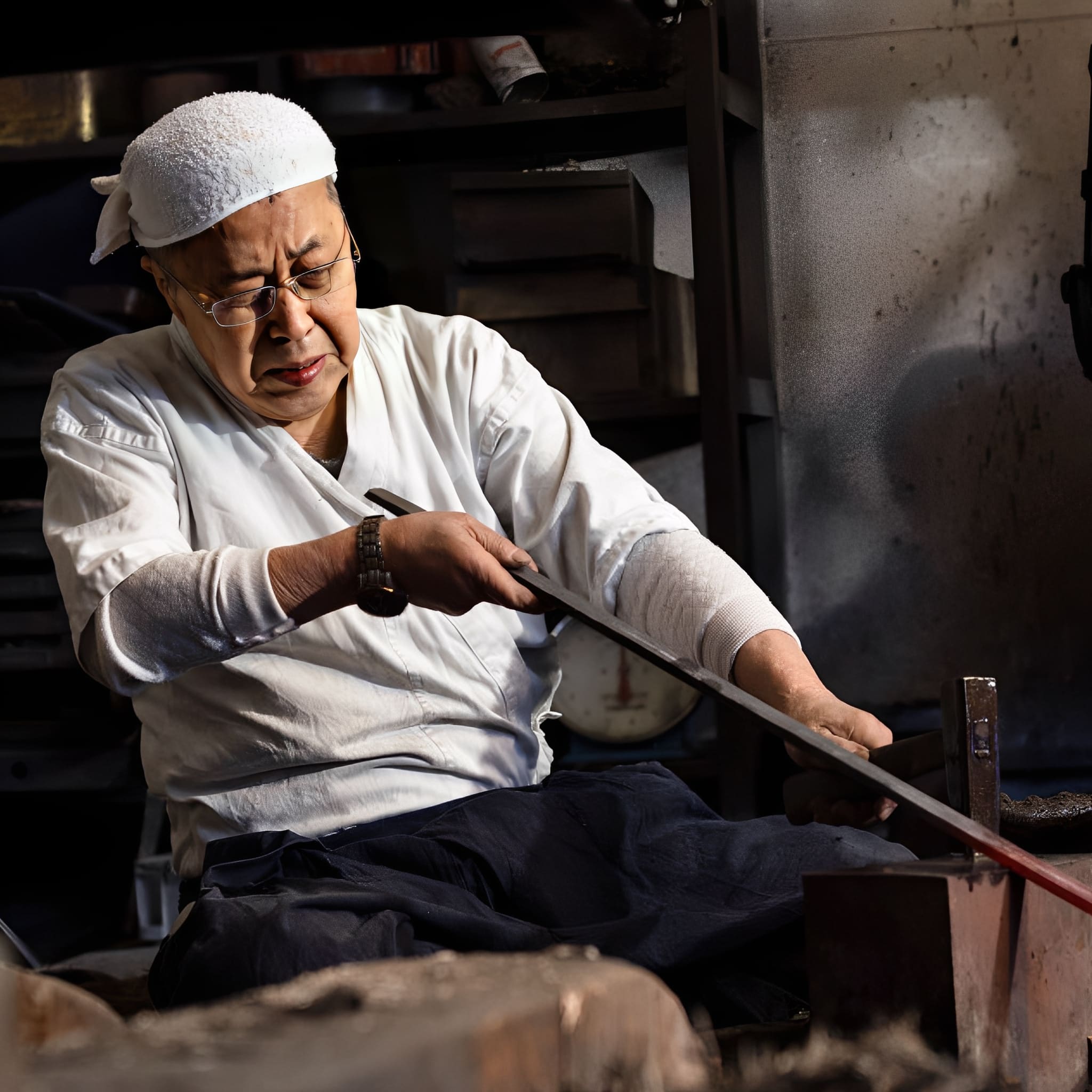
The Art of Traditional Forging
Each katana we craft is born from centuries of samurai tradition.
Our master smiths shape every blade by hand, folding the steel to achieve unmatched strength, flexibility, and beauty.
This time-honored process is not just about creating a weapon? it’s about preserving a legacy of discipline, honor, and artistry.
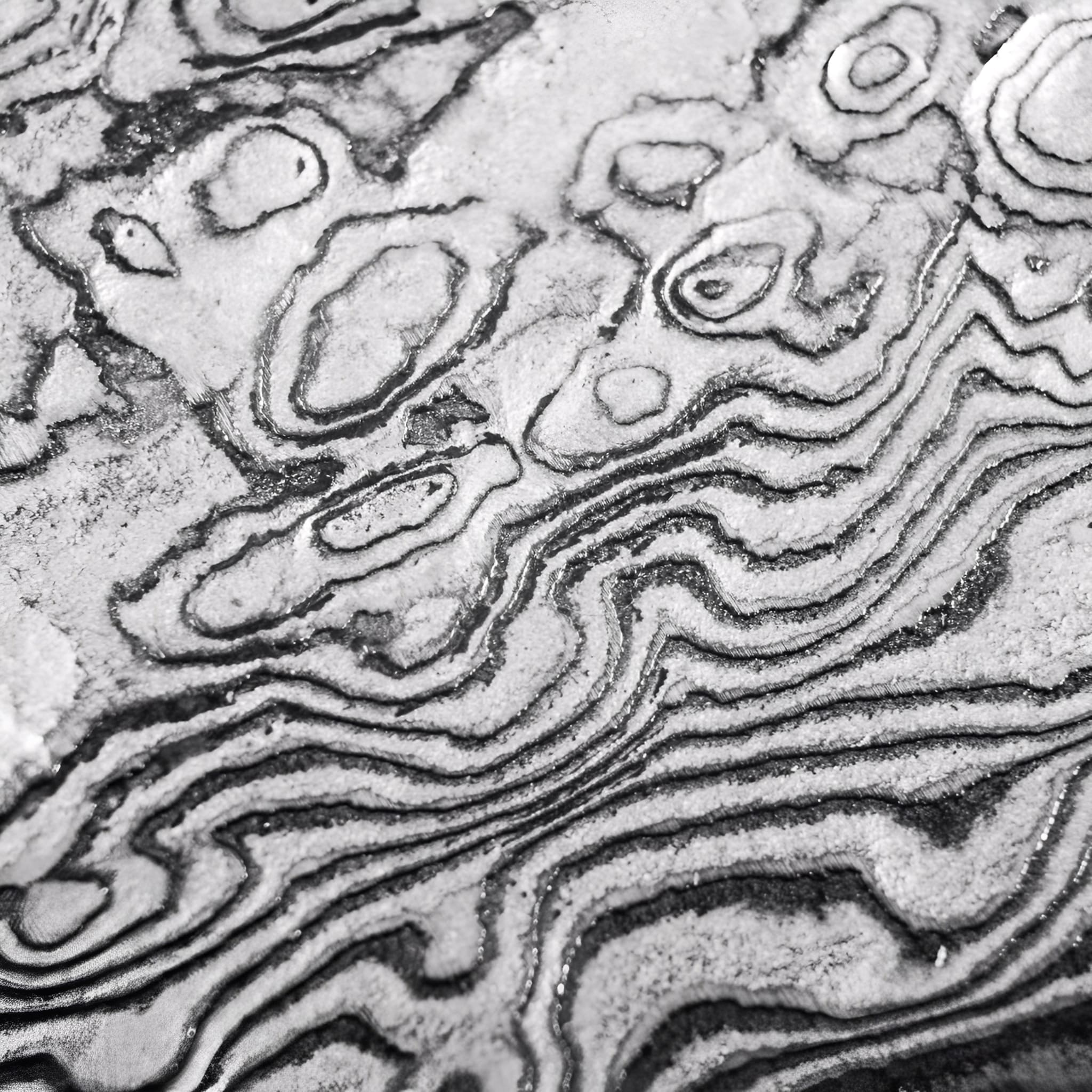
Materials Chosen Without Compromise
We select only the highest-grade steels and authentic fittings to ensure every katana is both a masterpiece and a reliable companion.
From the flawless hamon line to the perfectly balanced tang, each detail is carefully inspected to meet the highest standards of performance and aesthetics.
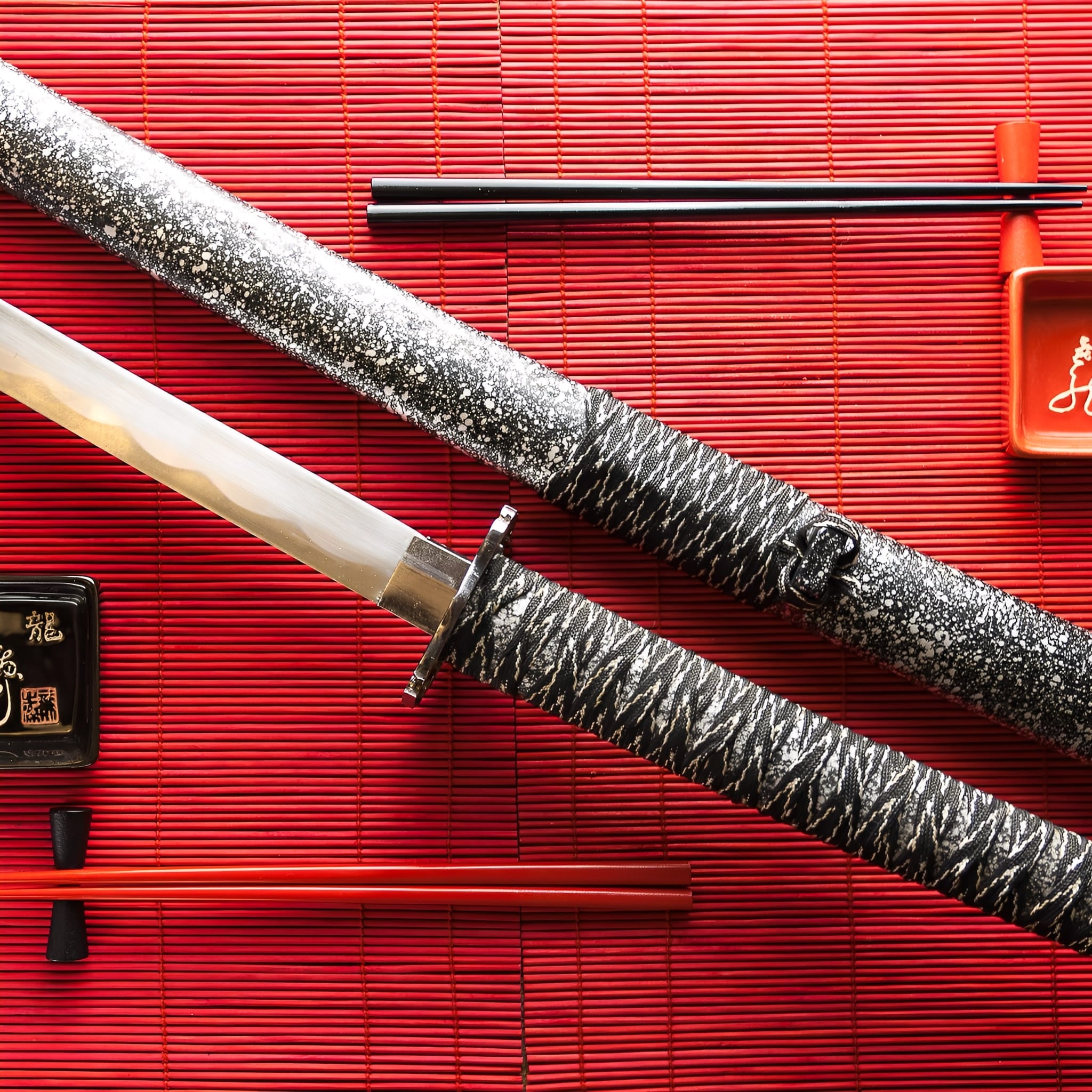
More Than a Sword, A Lifelong Legacy
Owning a handmade katana is an experience that goes beyond the blade itself. It’s holding history, tradition, and craftsmanship in your hands.
Whether displayed as a work of art or wielded with precision, your katana will stand as a symbol of timeless skill and dedication for generations to come.
-
Key Destinations
United States: 5–7 days
Canada: 5–7 days
Australia: 6–9 days
Denmark: 4–6 days
Netherlands: 3–5 days
Sweden: 4–6 days
Switzerland: 3–5 days
Finland: 5–7 days
Singapore: 6–8 days -
Central European Partners
France: 2–3 days
Germany: 3–5 days
Spain: 4–6 days
Italy: 4–6 days
Belgium: 3–5 days
Austria: 4–6 days
Ireland: 4–6 days
Poland: 4–6 days
Portugal: 4–6 days -
Extended EU Network
Czechia: 4–6 days
Hungary: 4–6 days
Slovakia: 4–6 days
Slovenia: 5–7 days
Romania: 5–7 days
Bulgaria: 5–7 days
Croatia: 5–7 days
Serbia: 5–7 days
Estonia: 5–7 days
Latvia: 5–7 days
Lithuania: 5–7 days
Luxembourg: 3–5 days
Greece: 5–8 days -
FAQ’s
Visit our FAQs page to find answers to common questions.